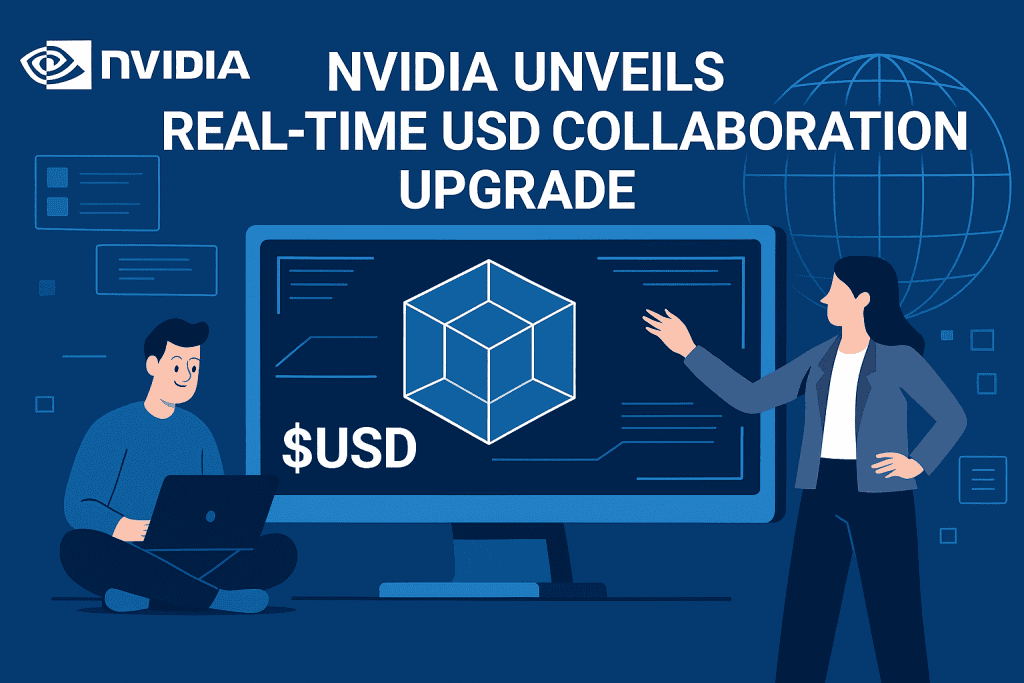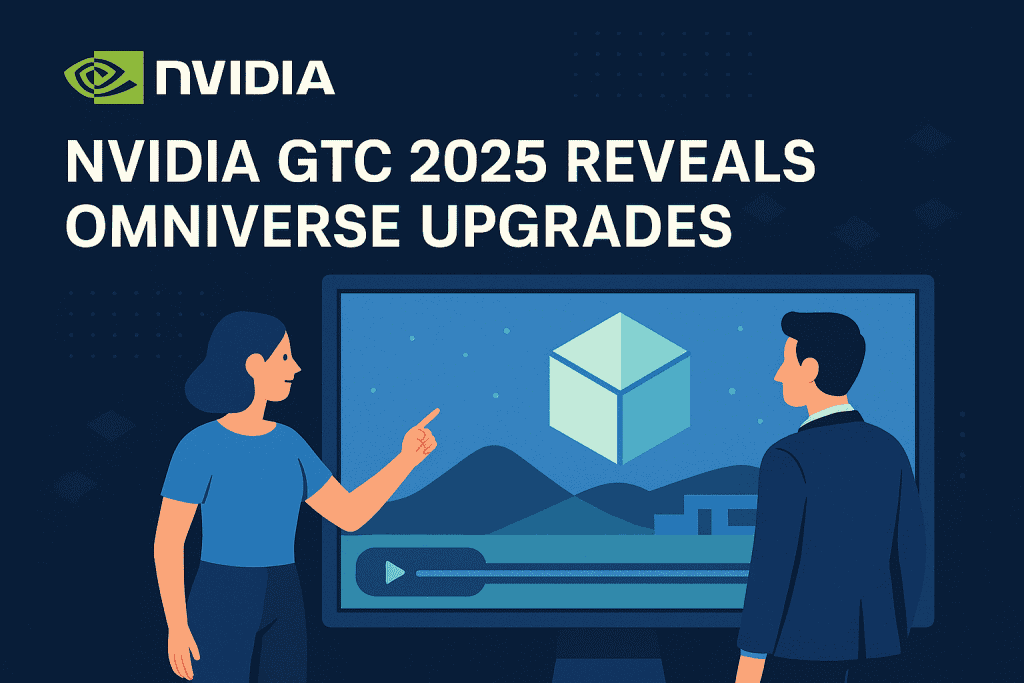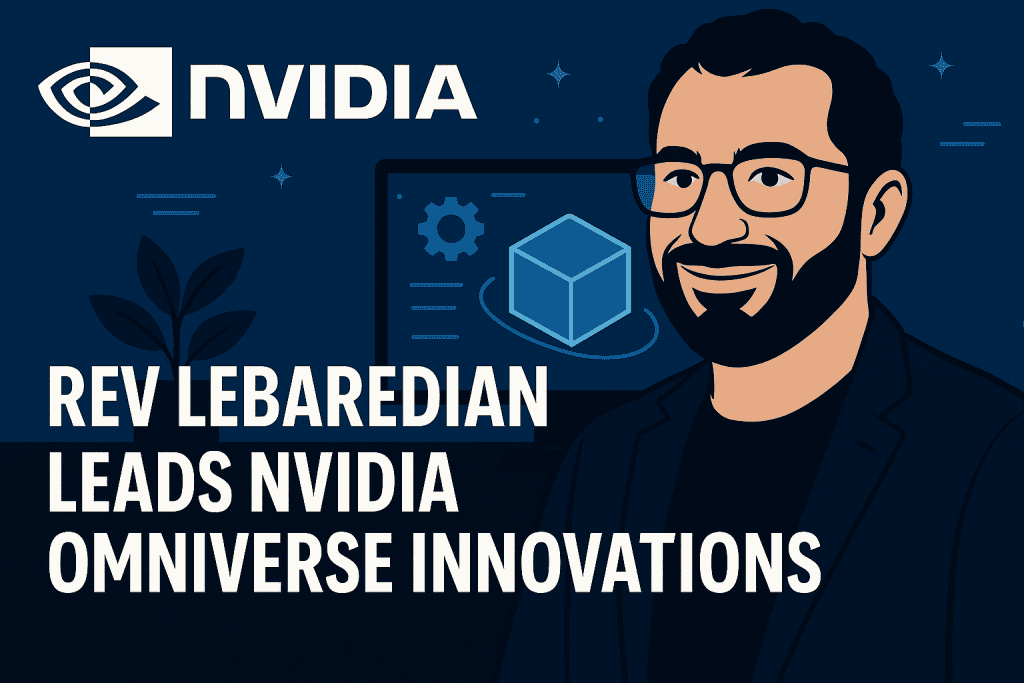Nvidia Omniverse is gaining attention because it’s changing how people create and work together in digital spaces. It’s no longer just a tool for experts, it’s becoming a space where artists, engineers, and developers can team up, even from different parts of the world. What used to take days of back-and-forth between teams can now happen in real time. This saves time and leads to better results.
The latest improvements in Omniverse make it easier to build lifelike environments, test ideas faster, and see changes as they happen. It’s like having a shared virtual studio where everyone can work on the same project at once. These updates don’t just benefit one field; they’re useful in areas like animation, product design, and even city planning.
What’s most exciting is how this platform blends creativity with practicality. People aren’t just imagining what’s possible, they’re building it. And thanks to Omniverse, they’re doing it faster, smarter, and together. This is why it’s becoming a key player in today’s tech landscape.

What Happened
Nvidia has officially rolled out a massive enhancement to its Omniverse platform, introducing advanced features that support multi-agent robotics simulations and AI-powered workflows. During the recent GTC event, Nvidia unveiled new partnerships and toolkits that allow professionals to build, test, and deploy digital twins with unprecedented precision.
One of the biggest announcements was the launch of the Omniverse Cloud APIs, now empowering developers to run full-stack simulations directly from the cloud. This drastically reduces the need for high-end hardware on-site and enables distributed teams to collaborate more effectively.
The reveal also included updates to the Nucleus server, which now supports real-time USD-based collaboration with automatic conflict resolution. Combine this with newly added AI copilot functionalities, and creators are now crafting entire environments with just a few prompts.
When and Where

The news about Nvidia Omniverse was announced at Nvidia’s Spring GTC Conference 2025, a global online event where technology experts and creators come together to share breakthroughs. This conference is known for being a big moment each year, often setting the tone for what’s next in the world of AI, graphics, and simulation.
During the event, Nvidia revealed several major improvements to Omniverse. These updates aren’t just promises—they’re already live for enterprise users, meaning companies can start using the new features right away. Developers outside of big businesses won’t have to wait long either. Public access is set to begin in the second quarter of 2025, making the tools available to a much wider audience.
This timing couldn’t be better. The tech industry tends to see a lot of new product launches around mid-year, and Nvidia’s update puts Omniverse right in the spotlight before that wave hits. By acting early, Nvidia gives creators and developers a head start with cutting-edge features that will likely shape how many upcoming projects are built.
In short, Nvidia Omniverse is stepping up at the perfect moment, offering fresh tools and ideas just when the industry is looking for its next big move. It’s a strong play that keeps Nvidia ahead of the curve.
Who is Involved

The latest Nvidia Omniverse update is the result of teamwork between some of the smartest minds at Nvidia and a few well-known global companies. Rev Lebaredian, who leads Nvidia’s Omniverse and simulation efforts, played a major role in this progress. He’s been a key figure in pushing the idea that digital spaces can be just as real and useful as physical ones.
Nvidia didn’t work alone on this. Big companies like BMW, Adobe, and Siemens also joined in. Each brought their own strengths. For example, BMW helped with manufacturing simulations, showing how a car factory can be tested and improved digitally before anything is built in real life. Adobe brought its creativity tools to the table, making sure the visual and design parts are strong. Siemens focused on helping engineers and industries use the platform to test ideas faster and more safely.
What brings all these groups together is a common goal: to make digital environments that can act like the real world. This helps people solve problems, test new ideas, and work together, even if they’re in different parts of the world. Thanks to this collaboration, Omniverse is becoming a powerful tool for everyone from artists to engineers.
Why It Matters
The latest updates to Nvidia Omniverse are important because they make high-end digital creation and collaboration much easier for everyone. Until recently, creating detailed 3D environments or running factory simulations required powerful machines and advanced skills. But with these new features, teams can work together on complex projects from anywhere, using tools that are simpler to access and easier to learn.
Take, for example, architects who are designing smart buildings. With Omniverse, they can build a digital version of a structure, test it for safety, and even walk through it virtually, all before laying a single brick. In manufacturing, teams can simulate how machines and robots will move and interact on the factory floor, saving time and avoiding costly mistakes. And in media production, artists from different parts of the world can build animated scenes together in real time, no matter where they are.
What makes this even more exciting is the addition of smart helpers built into the Omniverse Editor. These AI tools can suggest changes, speed up repetitive tasks, or help turn simple sketches into full scenes. That means people who aren’t experts can still take part in creating high-quality content.
Overall, Nvidia Omniverse is shaping up to be a creative playground and professional workspace rolled into one, where imagination and teamwork can thrive without limits.
Quotes or Statements
“Ready to embrace #PhysicalAI to transform industrial operations? 🏭”
Get a technical breakdown of the Mega #NVIDIAOmniverse Blueprint to learn how you can start developing your own multi-robot fleet simulation & validation pipeline. – Twitter. This powerful tweet hints at a growing trend, AI-driven physical simulations that replicate industrial processes in real time. It’s a bold statement and an inspiring nudge toward innovation for roboticists and engineers alike.
Conclusion
The recent updates to Nvidia Omniverse show just how serious Nvidia is about changing the way people work together in 3D environments. This isn’t just about nicer graphics—it’s about making teamwork easier, smoother, and more creative. With new tools that help different software and people work together in real time, Omniverse is becoming a central place where ideas can come to life quickly and clearly.
One standout improvement is the use of built-in AI to help with tasks. These smart tools don’t replace people, but they support them by speeding up editing, organizing scenes, or even building parts of a digital world with a few clicks. This saves time and opens up more room for creative thinking.
Looking ahead, it’s likely we’ll see even more useful updates. Nvidia continues to improve how Omniverse connects with other platforms and tools. That means less frustration switching between apps, and more focus on creating. For anyone working with 3D design, animation, or digital simulations, Omniverse isn’t just an option—it’s becoming a must-have.
Resources
- Nvidia.com. Nvidia Omniverse Overview
- Developer.nvidia.com. Omniverse Developer Portal
- Nvidia News. Nvidia Omniverse Physical AI Expansion
- Docs.omniverse.nvidia.com. Omniverse Developer Overview
- Dell.com. Dell and Nvidia Omniverse
- LinkedIn.com. Nvidia Omniverse Showcase
- YouTube.com. Nvidia Omniverse Developer Session
- Twitter.com. Nvidia Omniverse Announcement
